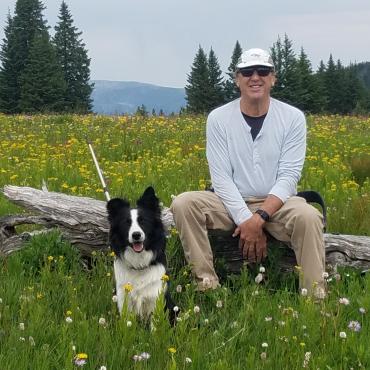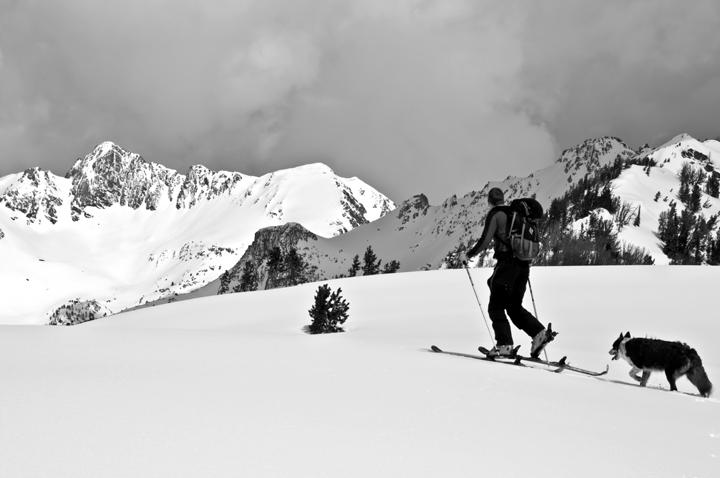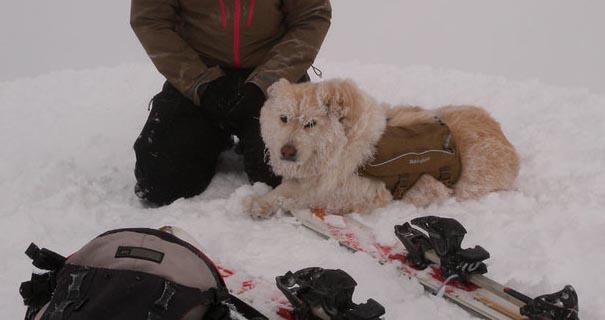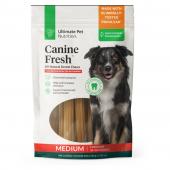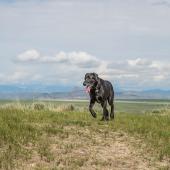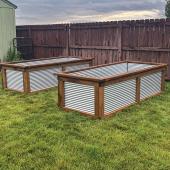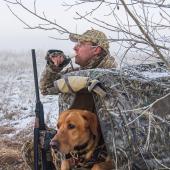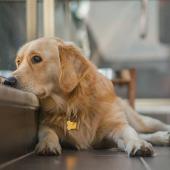Treating Dog Wounds on the Mountain
Skis often cut the limbs of dogs who accompany their guardians too closely underfoot. Bleeding can be from arteries, veins, or capillaries. Arterial bleeding is bright red and spurting and is more serious than venous bleeding, which is darker red and seeps rather than squirts. Capillary bleeding seeps slowly.
Dog First Aid Tip: remember to properly calm and restrain your dog with at least a leash before administering first aid. Remember, as well, to teach your dog to be a willing partner during handling and treatment before accidents occur.
Sterile Technique: use sterile technique and clean hands. Do not use strong iodine or hydrogen peroxide to clean open wounds; these products damage tissue. Use disinfectant from your dog first-aid kit properly diluted in water, like 1 ounce Nolvasan in 1 quart of water. If the wound appears to need stitching and is gaping, cuts should be wrapped as best possible before taking dog to a veterinarian within 24 hours. Dogs do not have any more inherent resistance to infection than people, so be just as clean as you would with your fellow human.
Treating a Bleeding Wound:
1. Apply direct pressure.
2. Once a wound has stopped bleeding, avoid any unnecessary rubbing, wiping, or exertion of the injured limb as it can cause the bleeding to resume.
3. Flush the wound with sterile solution or disinfected water to prevent further infection. If a large sterile syringe is available, water can be very gently squirted into wounds to dislodge persistent contaminants. Use a solution of chlorhexidine (Nolvasan) or tamed iodine (Betadine) diluted in water (1 ounce per quart of the cleanest water available or boiled water) to flush all wounds. Avoid water pressure that drives infective material deeper in to the wound.
3. If the wound appears contaminated, antibiotic ointment (Neosporin) can be sparingly applied after cleaning.
4. Gentle swabbing with gauze dipped in disinfected water can be useful if simple flushing does not successfully remove all debris, if the wound appears to be contaminated, or if it appears that flushing appears will cause further harm.
Note: clipping the hair around a wound may result in hair getting into the wound. Use care if clipping or cutting hair to facilitate wound cleansing and treatment.
5. Forceps or hemostats can be used to remove small slivers or pieces of gravel. Always suspect to find broken off and hidden foreign bodies in ugly-looking puncture wounds. If you use your utility tool, make sure it is thoroughly cleaned and disinfected with rubbing alcohol or iodine. Do not remove large or deeply impaled foreign objects.
6. If necessary to avoid further contamination or to prevent excessive licking, the wound is then covered with sterile gauze and wrap. The wrap is applied just snug enough to control the bleeding. Monitor limbs for adequate circulation and sensation.
Note: tourniquet application is not recommended unless it appears the bleeding is life threatening or the injury will require eventual amputation of the limb.
7. Wrap the wound to stop persistent bleeding and to prevent further contamination. The dog should have feeling below the wrap if feeling was present before its application. The limb below the wrap should be warm to the touch. A tight wrap should be replaced with a looser wrap if circulation beyond the wrap is significantly diminished for over 15 minutes. When a wrap is changed or loosened, the sterile gauze covering the wound should remain in place so as not to start the bleeding up again. Applying finger pressure to the arterial blood supply above the wound will minimize bleeding to facilitate dry-wrap application.
8. Get your dog to veterinary treatment as soon as possible.
Photo by Nick Vanhorn
This is an excerpt from Chapter 10, "Wounds and Bleeding," of Sid Gustafson's First Aid for the Active Dog, which O/B reviewed in Summer 2005.


